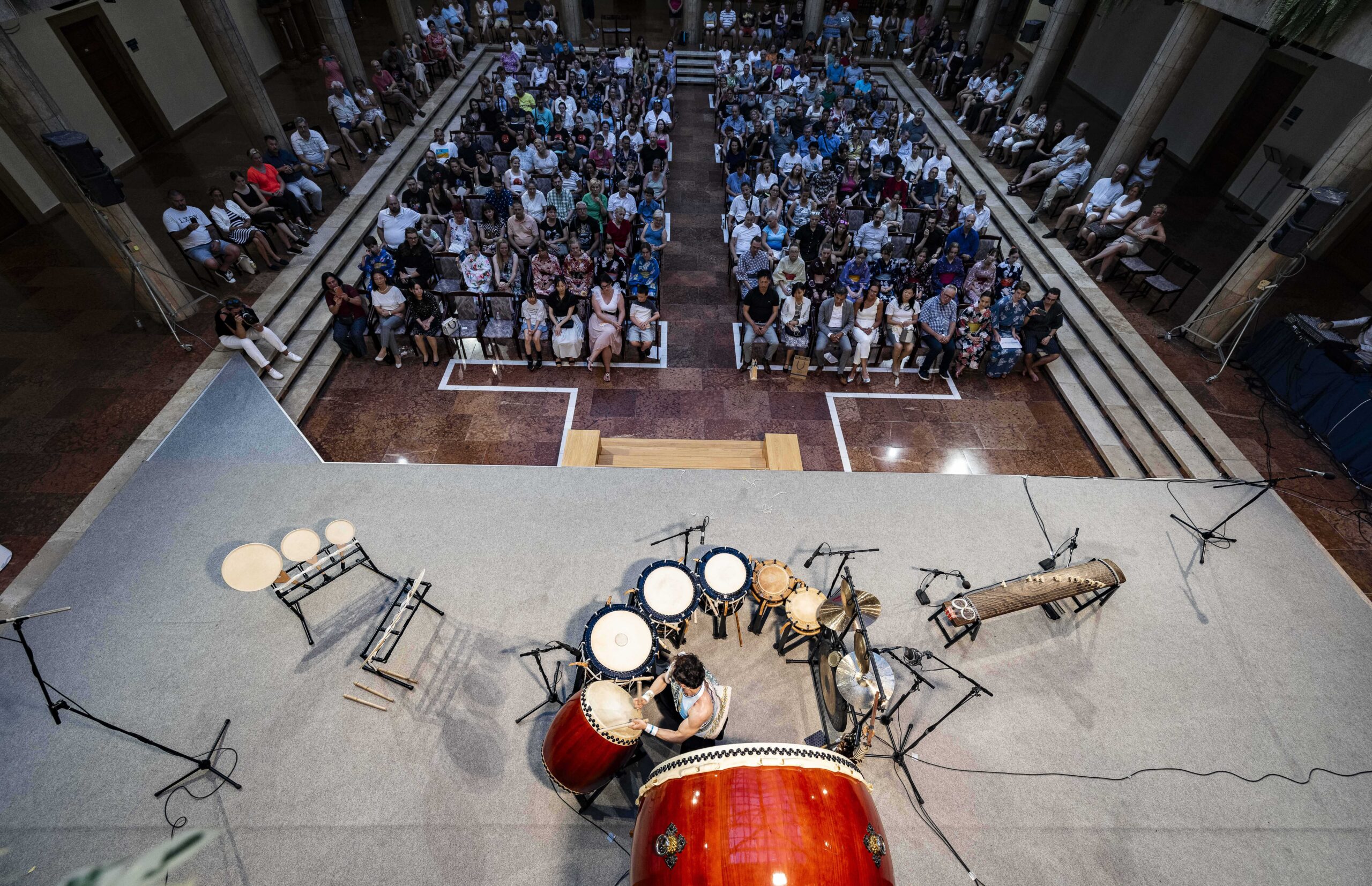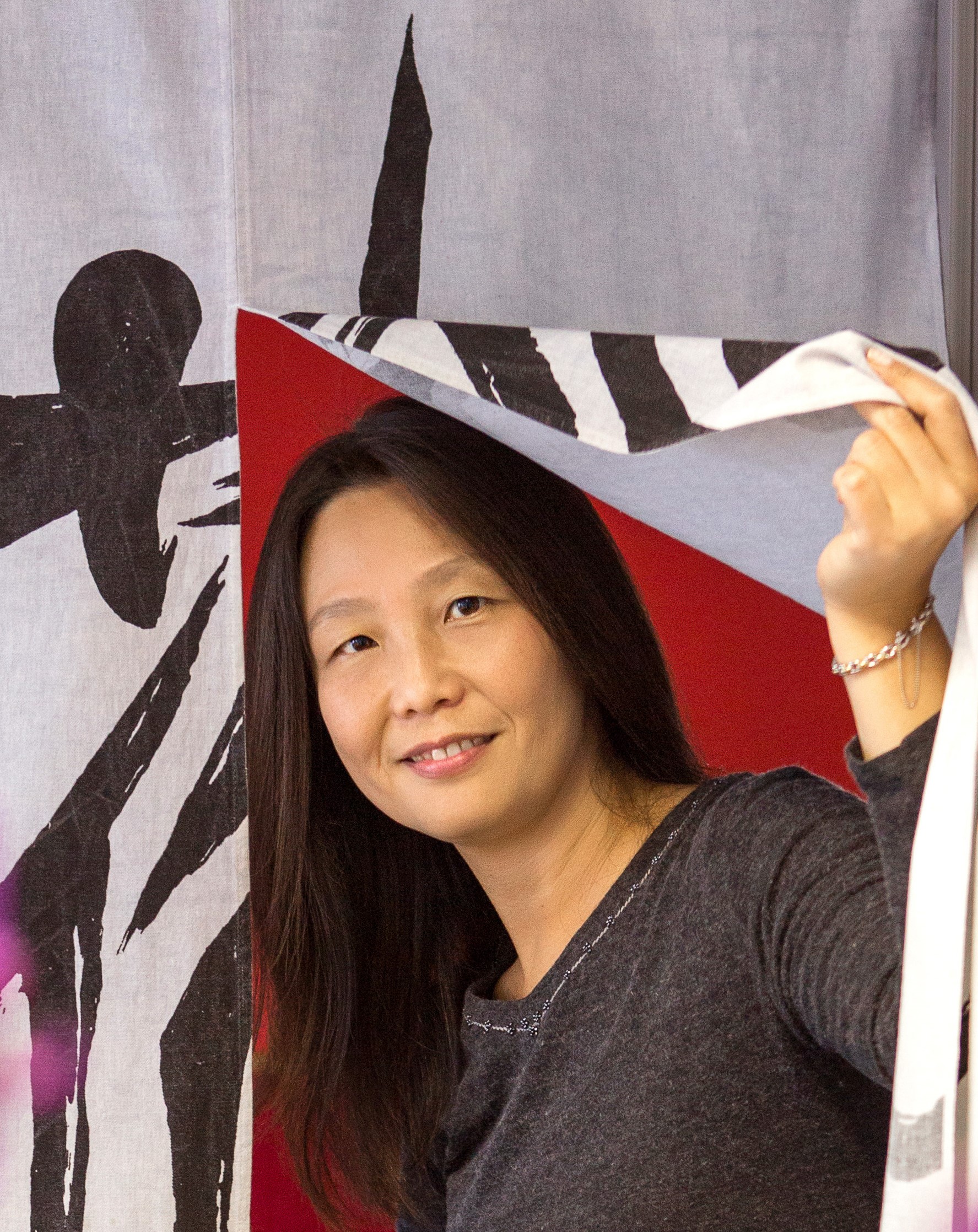Column
ColumnThe Sound of Japanese
In the past few years, anime-related content has been on the top of the list of reasons for Japanese language learners to start studying the language. However, when it comes down to it, many students are fascinated by the sound of the Japanese language and fall in love with it. Languages with many vowels have a gentle sound, and Japanese, which is rarely pronounced with only consonants, is considered a beautiful language.
This year, the Minerva-Japan Centre organised the ‘Kacho Fugetsu Project’ to introduce the Japanese seasonal events and the five festivals. They are to give people a taste of traditional Japanese culture. Culture is imbued in language and by learning Japanese, you can learn about Japanese culture. Vice-versa: by coming into contact with art and culture, one’s understanding of the language deepens, and the synergistic effect allows one to explore the language and culture even further.
At the beginning of the year celebration, ‘Shogatsu’, we organised a calligraphy programme. As well as learning its basic techniques, the participants also learnt that calligraphy is an art form that can help develop concentration, perseverance, a sense of beauty, and other spiritual elements. During the Peach Festival in March, they learnt about the Japanese seasonal words by composing Haiku and learnt a new way of appreciating nature. While admiring the Hina Dolls, they enjoyed a delicious cup of Japanese tea brewed by an instructor and experienced a tea Kabuki play.
At the Children’s Day Festival event in May, participants became familiar with the sounds of the Koto (Japanese harp), Shamisen (a three-stringed traditional Japanese musical instrument) and Shinobue (Japanese transverse bamboo flute). From small children to adults, many people tried their hand at playing Japanese instruments in workshops. We also had a session between a Japanese instrument group and the Modern Music Centre in Veszprém. It was an opportunity to think about the future of traditional instruments through international cultural exchange with music. We thus gained preliminary knowledge of the sound of Japanese to fully enjoy the Taiko (Japanese drums) concert at the Star Festival in July.

On 7 July, the day of the event, the Japanese language students arrived at the venue dressed in Yukata. In prior to the event, they had learnt how to wear them at the dressing workshop. They tied Origami decorations they had made in advance and strips of paper with prayers to the bamboo decoration branches set up in the hall. Waiting for the performance to begin, the hall was filled with more than 250 people. Extra seats had to be brought in as a result. Many people turned their cameras in front of the biggest Taiko drum they had ever seen. Needless to say, most of the audience had never even seen Taiko before. In order for them to fully enjoy the art of the instrument, we explained what the ‘Tanabata’ (Japanese star festival) is, what Taiko means to the Japanese people and the history of Japanese musical instruments before the concert began. And so the Tanabata Taiko Concert by Taiko-ist TAKUYA (Mr. Takuya Taniguchi) ended with a round of applause that reached all the way to the Milky Way.
Three days later, the concert was covered extensively in the cultural section of the local newspaper. Frankly, I was surprised at how far it was conveyed. On a side note, there are 14 vowels in the Hungarian language. Hungarian speakers who have started learning Japanese and have an ear for these vowels are always asking me which ‘u’ I have just uttered. For me, there is only one ‘u’, but in Hungarian there are four ‘u’s, which are clearly distinguishable. This is why the ambiguous ‘u’ is so difficult to distinguish. Perhaps it is because Hungarians have such ears, and because they listen to music on a daily basis, they are able to hear even the deepest of sounds. The article also mentioned the culture behind the sound, and what the sound of the Taiko drum means in Japan.

Taiko drummer Taiko-ist TAKUYA has enchanted the Tanabata Festival with his wonderful art. He is currently based in Munich, Germany. Takuya became interested in Taiko at the age of three and joined the Taiko group Tenryu Daiko in his early primary school year. He then began composing and performing. In July 2002, he and his band members were invited to the ‘Summa Cum Laude International Youth Music Festival’ where the team was awarded the Special Grand Prize of the City of Vienna. In 2003, he passed a professional audition for the Eitetsu Fu-un no Kai, directed by leading Taiko drummer Eitetsu Hayashi. He performed at the ‘International Taiko Concert EXTASIA 2003’, where he made his professional debut. As a solo performer, he continues to create new styles that transcend the boundaries of Taiko, collaborating with Kabuki, European jazz, Tsugaru Shamisen, pianists and other genres.
Last year, with the support of the EU-Japan Fest Japan Committee for the European Capital of Culture SAKURA project, the Minerva-Japan Centre landscaped a Japanese garden in Veszprém. This year, during the closing event, the Chrysanthemum Festival in September, a meeting tea party for artists will be held in the garden. At the event, the collaboration plans between traditional Japanese music (Taiko and Shamisen) and contemporary European music (jazz and orchestral) will be discussed.
As a final note, the Tanabata Festival and Taiko Concert were made possible as a continuation of the EU-Japan Fest Japan Committee with support from the Japan Foundation Budapest Japanese Cultural Centre and Nissin Foods. We would also like to express our sincere gratitude to the local institutions, Minerva Learning Alternative Foundation and the House of Arts Veszprém for their support. The Minerva Japan Centre hopes to continue to organise a variety of genuine Japanese arts and cultural events and deliver the sound of Japan in this European Capital of Culture Veszprém-Balaton 2023 and UNESCO City of Music.








